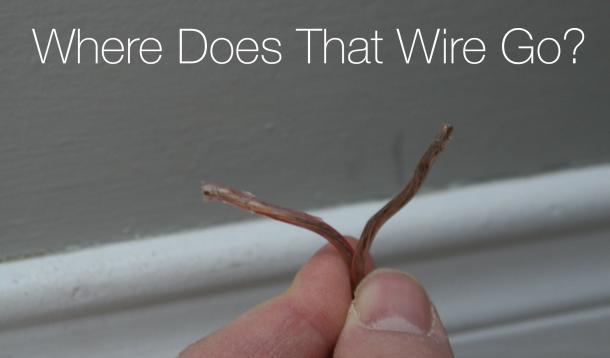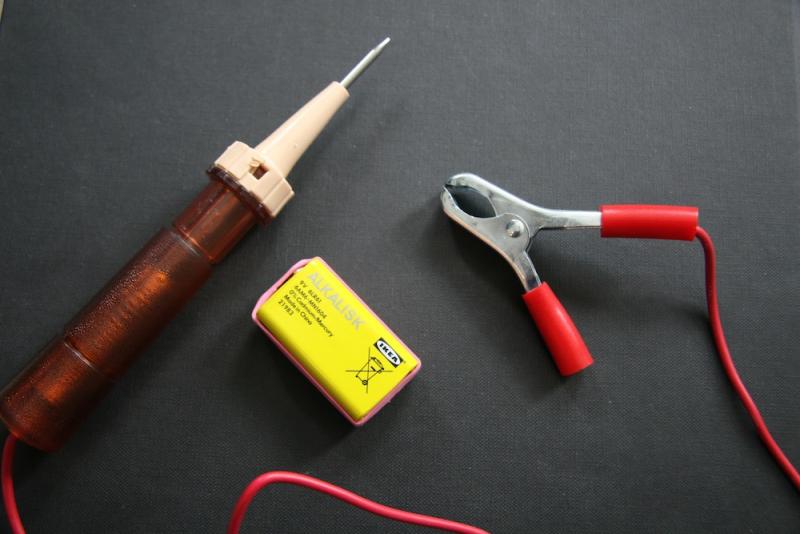
Before we begin, let's get the seamingly obvious out of the way: unless you know there's no power going to a wire, DON'T TOUCH IT.
My new house has a whack of speaker wire running through it, which is great for a stealthy stereo setup, but it seems to go all over the place. I have no idea which ones go where. My plumber suggested this great trick. It works perfectly on speaker wire, but can also be used for any kind of cable with more than one wire in it.
Here's what you'll need:

At one end of the cable, wrap one wire around the positive post of the battery, and another on the negative post. With speaker wire, you only have two wires, so it's simple, but you can do this with other wires too, including Ethernet (internet) cables. It may mean you have to get creative about how you get your wires connected to the battery — but where there's a will, there's a way*. Use the rubber band or tape to lock the wires down on the battery so they don't move once you walk away. Use your circuit tester to make sure the wire connection is good. The little light will glow if you've got a good connection.

Now, simply wander around and touch both ends of your circuit tester to the ends of the suspected termination for that cable. If you find the right one, your tester will glow. In my case, the mystery wire ended behind my sofa in the family room. I can now pump the same music throughout the whole main floor!

The alternative, which is totally pimp, is to buy a Wire Tracer (a.k.a. "Toner") which will let you trace wires through walls via an audible "tone" which is emitted whenever the tracer is close to the wire. They are about $100-$200 and available at places like Home Depot, Canadian Tire, Lowes, etc.
Let me know if have any questions, or other ideas! You can find me on Twitter as @squrrell.
*For Ethernet cables, you can create your own test plugs using something called an "Ethernet Keystone Punch-down", which I've purchased in the past in-store from The Source.